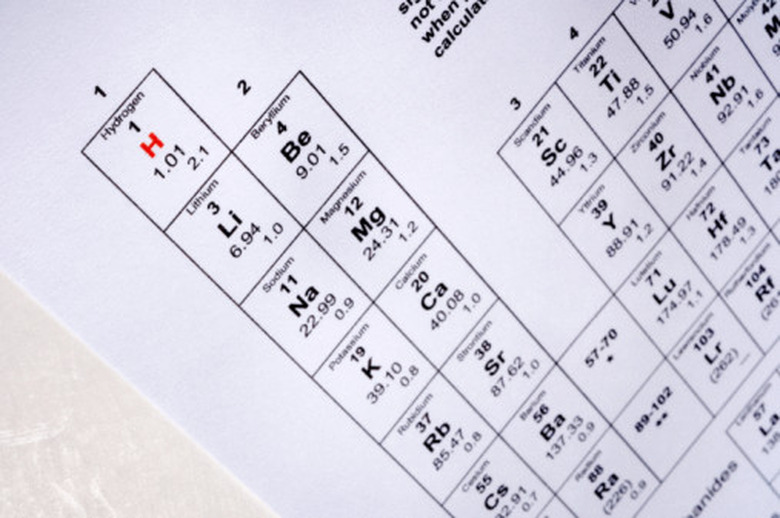How To Name Polyatomic Ions
Polyatomic ions consist of at least two atoms—usually a base atom joined with one or more oxygen atoms, and sometimes hydrogen or sulfur atoms as well. However, there are exceptions that do not contain oxygen. Common polyatomic ions carry charges ranging between +2 and -4; those with positive charges are cations, and those with negative charges are anions. Beginning chemistry students may find the ion naming system confusing, but a few basic rules will help you sort out the names of many common polyatomic anions. There are only a few polyatomic cations common in general chemistry, so you can easily memorize their names.
Step 1
Write the prefix that is used to identify the main atom in the ion. Most atom prefixes are either the first syllable of the atomic name or the entire name. For example, the prefix for nitrogen is "nitr-" and the prefix for carbon is "carbon-."
Step 2
Determine the number of anions—either 2 or 4—that can be formed by adding oxygen atoms to the main atom. Use a list of polyatomic ions if you are unsure of the number (see Resources).
Step 3
Add the prefix "-ate" if the ion has the higher number of oxygen atoms for an element that can form only two anions. Add the prefix "-ite" for the ion with the lower number of oxygen atoms.
Step 4
Use the prefix "per-" for the ion with the most oxygen atoms if there are four anions. Use the prefix "hypo-" for the ion with the fewest oxygen atoms. Add "-ate" and "-ite" for the two ions with the most and fewest oxygen atoms, respectively.
For example, the polyatomic ions formed with bromine, in order from fewest to most oxygen atoms, are hypobromite, bromite, bromate and perbromate.
Step 5
Use the prefix "bi-" or add the word "hydrogen" before the name if there is one hydrogen atom in the anion. Add the word "dihydrogen" before the name if there are two hydrogen atoms.
Step 6
Add the prefix "thio-" if one of the oxygens in a polyatomic anion is replaced with a sulfur atom.
Step 7
Memorize the names of the few common polyatomic cations. The common cations with a +2 charge are mercury(I)—Hg2—and vanadyl—VO. The common cations with a +1 charge are ammonium (NH4), hydronium (H3O) and nitrosyl (NO).
TL;DR (Too Long; Didn't Read)
Write "hydroxide" for the ion OH- and "cyanide" for the ion CN-.
Many, but not all, polyatomic ions follow these naming conventions. Refer to a chemistry textbook if you are unsure. In particular, organic ion names follow the same naming system as other organic compounds.
Cite This Article
MLA
Wakefield, Petra. "How To Name Polyatomic Ions" sciencing.com, https://www.sciencing.com/name-polyatomic-ions-7864214/. 24 April 2017.
APA
Wakefield, Petra. (2017, April 24). How To Name Polyatomic Ions. sciencing.com. Retrieved from https://www.sciencing.com/name-polyatomic-ions-7864214/
Chicago
Wakefield, Petra. How To Name Polyatomic Ions last modified March 24, 2022. https://www.sciencing.com/name-polyatomic-ions-7864214/
